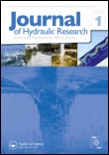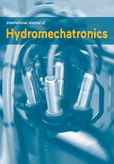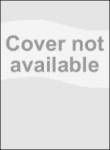
JOURNAL OF HYDRAULIC RESEARCH
Scope & Guideline
Pioneering Discoveries in Hydraulic Engineering and Water Management
Introduction
Aims and Scopes
- Hydrodynamics and Fluid Mechanics:
Research in this area includes studies on fluid flow, turbulence, and interactions between different fluid phases, such as air-water flows and sediment transport. - Hydraulic Structures and Engineering:
This scope covers the design, analysis, and performance of hydraulic structures such as dams, spillways, and channels, focusing on their hydraulic behavior under various conditions. - Numerical Modeling and Simulation:
The journal emphasizes the development and application of numerical methods, including computational fluid dynamics (CFD) and lattice Boltzmann methods, to solve complex hydraulic problems. - Experimental Investigations:
A strong focus on experimental studies that validate theoretical models and numerical simulations, providing insights into real-world hydraulic phenomena. - Environmental Hydraulics:
Research addressing the impact of hydraulic processes on the environment, including sediment transport, river dynamics, and ecological considerations. - Hydraulic Transients and Water Hammer:
Studies on the dynamics of transient flows, including water hammer effects and their implications for hydraulic systems.
Trending and Emerging
- Machine Learning and Data-Driven Approaches:
Recent publications highlight the use of machine learning techniques for predictive modeling in hydraulic systems, showcasing a trend towards data-driven methodologies that enhance predictive capabilities. - Climate Change and Hydraulic Impacts:
There is an increasing focus on the implications of climate change on hydraulic systems, including studies on flooding, sediment transport, and the resilience of hydraulic infrastructure. - Multiphase Flow Dynamics:
Research on multiphase flows, particularly air-water interactions, is gaining prominence, reflecting an interest in understanding complex hydraulic phenomena relevant to various engineering applications. - Sustainable and Green Hydraulic Solutions:
Emerging studies emphasize sustainable practices in hydraulic engineering, including the use of natural materials and eco-friendly designs in hydraulic structures. - Advanced Experimental Methods:
Innovative experimental techniques, such as particle image velocimetry (PIV) and acoustic Doppler current profiling, are increasingly being employed to gain deeper insights into hydraulic behavior.
Declining or Waning
- Traditional Hydraulic Design:
Research focused solely on conventional hydraulic design principles appears to be waning, as modern approaches increasingly integrate advanced computational methods and experimental validation. - Simplistic Models of Flow Dynamics:
There is a noticeable decrease in the publication of studies using overly simplistic models that do not account for complex interactions in hydraulic systems, as more sophisticated modeling techniques gain traction. - Historical Studies in Hydraulic Engineering:
The journal has seen fewer papers that focus on historical analyses or case studies of past hydraulic projects, possibly due to a shift towards contemporary applications and innovations.
Similar Journals

International Journal of GEOMATE
Exploring the intersection of construction, environment, and geotechnics.The International Journal of GEOMATE, published by GEOMATE INT SOC based in Japan, is a pivotal resource for scholars and practitioners in the fields of Building and Construction, Environmental Engineering, Geotechnical Engineering, and Soil Science. Established in 2011 and continuing to set the standard in its focus areas, this journal serves as a platform for innovative research and practical applications, with contributions that significantly enhance the understanding and development of sustainable engineering practices. With its current classification in the Q3 quartile across multiple categories, it strives to disseminate critical knowledge and foster dialogue among a diverse audience, including researchers, industry professionals, and students. Though operating under a traditional subscription model, the journal's emphasis on rigorous peer review and high-quality publications ensures a substantial impact factor, further reinforcing its reputation in academia. Spanning from 2011 to 2024, the International Journal of GEOMATE invites contributions that advance the knowledge frontier and address contemporary challenges in engineering and environmental science.

INTERNATIONAL JOURNAL OF OFFSHORE AND POLAR ENGINEERING
Connecting Global Expertise in Engineering DisciplinesINTERNATIONAL JOURNAL OF OFFSHORE AND POLAR ENGINEERING, published by the International Society of Offshore and Polar Engineers, is a prominent academic journal dedicated to advancing research in key engineering disciplines such as Civil, Mechanical, and Ocean Engineering. Established in 1991, the journal caters to a global audience, providing an essential platform for disseminating innovative findings and case studies pertinent to offshore and polar environments. With a focus on practical and theoretical applications, the journal ranks in the Q3 category across its relevant fields as of 2023, reflecting its significant contribution to civil and structural engineering, mechanical engineering, and ocean engineering. Although it does not offer open access, its rigorous peer-review process ensures that only high-quality research is published, making it a critical resource for researchers, industry professionals, and students invested in the dynamics of offshore and polar engineering. The journal's commitment to exploring emerging challenges and technological advancements underlines its importance in shaping the future of engineering practices in some of the world's most extreme environments.

COMPUTERS & FLUIDS
Transforming Fluid Dynamics Through Computational ExcellenceCOMPUTERS & FLUIDS, published by PERGAMON-ELSEVIER SCIENCE LTD, is a premier journal in the fields of Computer Science and Engineering, with a distinguished history dating back to 1973. Its Q1 ranking in both Computer Science (Miscellaneous) and Engineering (Miscellaneous) illustrates its high impact and relevance, being positioned among the top tier of scientific publications. With a robust focus on the intersection of computational methods and fluid dynamics, this journal serves as a vital platform for researchers, professionals, and students dedicated to advancing knowledge and technology within these domains. Although it is not an open-access journal, its articles are accessible through various academic institutions and libraries, ensuring that vital research reaches its intended audience. Readers can explore innovative methodologies and applications, reinforcing the journal's commitment to enhancing the understanding of fluid mechanics through cutting-edge computational approaches. For more details, visit the official website of COMPUTERS & FLUIDS to stay abreast of the latest research advancements.

International Journal of Hydromechatronics
Empowering Innovation in Control SystemsThe International Journal of Hydromechatronics, published by INDERSCIENCE ENTERPRISES LTD, is a premier academic journal dedicated to the interdisciplinary field of hydromechatronics, which combines principles from hydraulics, mechanics, and electronics to innovate sophisticated control systems and applications. With its ISSN 2515-0464 and E-ISSN 2515-0472, the journal has established a significant presence in the United Kingdom and is strategically positioned to serve as a vital resource for researchers, practitioners, and students alike. As a reputable publication with a Q2 ranking in categories such as Automotive Engineering, Electrical and Electronic Engineering, and Mechanical Engineering, the journal underscores its commitment to publishing high-quality, peer-reviewed articles that contribute to advancing knowledge and technology in its field. The impact factor reflects the journal's relevance, and its rigorous selection process ensures that only the most impactful studies are featured. Although currently not an Open Access publication, the journal remains dedicated to disseminating cutting-edge research findings that meet the highest academic standards. With convergence years from 2019 to 2024, it aims to foster innovative solutions and knowledge exchange in hydromechatronics, making it an essential platform for those striving to push the boundaries of technology and engineering.

Journal of Applied Water Engineering and Research
Empowering Policymakers with Applied Water InsightsJournal of Applied Water Engineering and Research is a dynamic platform dedicated to the advancement of knowledge in the field of water science and technology. Published by Taylor & Francis Ltd, this journal aims to bridge the gap between theoretical research and practical applications in water engineering, providing a crucial resource for researchers, practitioners, and policymakers. With an ISSN of 2324-9676 and an impressive ranking in the Q3 category for Water Science and Technology, it occupies a distinctive position within the scholarly community. The journal covers a wide spectrum of topics, including innovative water management strategies, sustainable practices, and the integration of technology in water resource management, thus contributing significantly to the discourse surrounding environmental sustainability. With publication years converging from 2013 to 2024, the Journal of Applied Water Engineering and Research continues to foster impactful research, enhancing our understanding and management of vital water resources.

Water Science and Engineering
Unveiling the Science Behind Water Engineering ExcellenceWater Science and Engineering, published by ELSEVIER, is a premier open access journal that has been disseminating vital research in the realms of civil and structural engineering as well as ocean engineering since 2008. With its ISSN 1674-2370 and E-ISSN 2405-8106, this journal plays a crucial role in advancing knowledge and innovation within the sector, evidenced by its impressive rankings in Scopus—holding the 15th position out of 105 in Ocean Engineering and 76th out of 379 in Civil and Structural Engineering, placing it in the 86th and 80th percentiles, respectively. Attaining a Q1 classification in both categories for 2023 highlights its importance and influence in the academic and professional communities. The journal addresses a broad spectrum of topics integral to water sciences, offering significant insights for researchers, professionals, and students alike. With a convergence period spanning from 2010 to 2024, it continues to explore contemporary issues and advancements, providing a pivotal platform for the dissemination of research. The journal is accessible to a global audience, reaffirming its commitment to fostering open access and enhancing accessibility to vital scientific literature.

Journal of Water Management Modeling
Advancing Knowledge in Civil Engineering and Water TechnologyThe Journal of Water Management Modeling, published by COMPUTATIONAL HYDRAULICS INT, stands as a pivotal resource in the fields of Civil and Structural Engineering, Geography, Planning and Development, and Water Science and Technology. With an ISSN of 2292-6062, this Canadian-based journal has earned its reputation by exploring innovative modeling approaches to enhance water management, crucial in addressing today's environmental challenges. Despite its current Q3 status in Civil and Structural Engineering and Water Science categories, alongside a respectable Q2 rank in Geography, the journal is committed to advancing knowledge and fostering collaboration among researchers, practitioners, and students passionate about the sustainable management of water resources. The journal operates on an open-access model, ensuring research is readily available to a broad audience, and has converged its editorial focus from 2018 to 2024, continuously adapting to emerging trends and technologies within the discipline. As a part of the global conversation regarding effective water management, it plays a vital role in informing policies and practices that impact communities and ecosystems alike.

GEOSYNTHETICS INTERNATIONAL
Driving Excellence in Geosynthetic ResearchGEOSYNTHETICS INTERNATIONAL, published by EMERALD GROUP PUBLISHING LTD, is a leading journal in the fields of Civil and Structural Engineering and Geotechnical Engineering, recognized for its significant contributions since its inception in 1994. With an impressive impact factor reflecting its esteemed reputation—ranking in the top quartile (Q1) for both primary categories—this journal serves as a critical platform for the dissemination of cutting-edge research and innovations related to synthetic materials in geotechnical applications. Researchers, professionals, and students alike benefit from access to peer-reviewed articles that explore both theoretical advancements and practical implementations of geosynthetics, addressing complex engineering challenges and environmental considerations. Given its commendable rankings in Scopus, where it stands at Rank #73 in Civil and Structural Engineering and Rank #46 in Geotechnical Engineering, with an 80th percentile performance, the journal not only enhances scholarly dialogue but also influences industry practices. GEOSYNTHETICS INTERNATIONAL continues to play a pivotal role in shaping future directions in engineering and sustainability.

Journal of Hydrodynamics
Advancing the Frontiers of Fluid DynamicsWelcome to the Journal of Hydrodynamics, a premier academic journal dedicated to pioneering research in the fields of Condensed Matter Physics, Mechanical Engineering, Mechanics of Materials, and Modeling and Simulation. Published by Springer, this esteemed journal has been a vital resource since its inception in 1990 and boasts a notable Q1 ranking across its relevant categories, underscoring its importance in advancing knowledge and innovation. With a robust Scopus ranking reflecting its impact—such as being in the 82nd percentile in Mathematics: Modeling and Simulation and the 75th percentile in various engineering disciplines—the journal serves as a critical platform for researchers, professionals, and students. While not currently an open-access publication, the Journal of Hydrodynamics remains committed to fostering scholarly dialogue and disseminating high-quality research that shapes the future of its field. Our mission is to provide a comprehensive forum for the discussion of theoretical and applied hydrodynamics, potentially influencing both academic inquiry and practical applications worldwide.

Journal of Hydrology and Hydromechanics
Elevating the conversation on water dynamics and engineering.Journal of Hydrology and Hydromechanics, published by SCIENDO, is a prominent open access journal that has been disseminating crucial research findings in the fields of fluid flow, mechanical engineering, and water science since its inception in 1973. With its open access model established in 2009, the journal ensures that innovative research is available to a global audience, enhancing the visibility and impact of studies related to hydrological systems and their applications. The journal holds a commendable position within the academic community, reflected in its category quartiles, achieving Q2 rankings in 2023 across key areas such as Fluid Flow and Transfer Processes, Mechanical Engineering, and Water Science and Technology. Its Scopus rankings further highlight its relevance, placing it among the top journals in its categories. The Journal of Hydrology and Hydromechanics not only serves as a vital resource for researchers and professionals aiming to advance hydrological knowledge but also provides students with a wealth of information to better understand the complexities of water dynamics and associated engineering challenges.